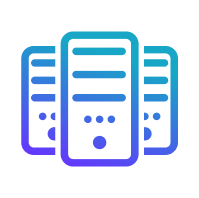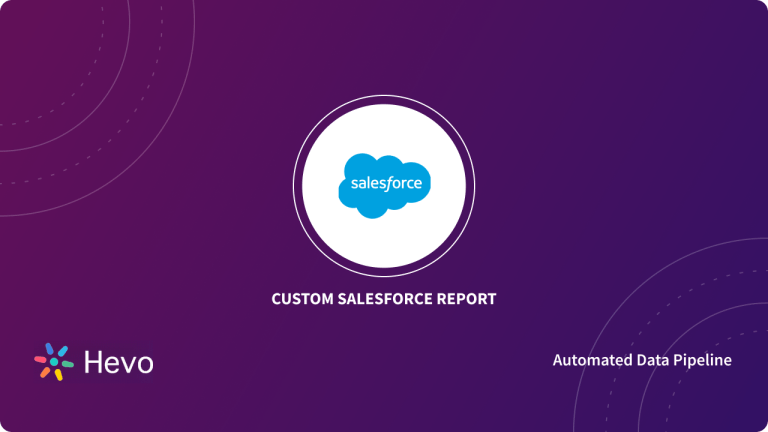Salesforce is a cloud-based software as a service provider that offers many solutions that aid organizations in conducting their business smoothly.
- Salesforce services help an organization acquire leads, nurture them to opportunities, convert them to customers, service the customers and then maintain the relationship.
- Having such services spares organizations of the effort to implement their custom solutions and help focus on the actual part of selling and generating profit.
- This post is about Salesforce Automation – A solution for automating business processes. It starts with a brief introduction to Salesforce Automation before diving deeper into the key Salesforce Automation tools and the bests practices to optimize the Sales Automation process.
Table of Contents
Introduction to Salesforce Automation
Salesforce Automation is part of the Salesforce Platform offering that specializes in business process automation. It helps in automating repetitive tasks like creating records based on lead acquisition, sending scheduled or triggered communication, creating approval workflows, etc.
- Salesforce Platform is priced from 25$ per user per month for the cheapest plant.
- The platform also includes Einstein Automate which helps accomplish automation tasks involving external integrations with other cloud-based services.
- Salesforce Automation provides non-code tools based on drag and drop interfaces to automate many common patterns found in typical organizations.
Hevo is a no-code data pipeline platform that supports Google Analytics and Salesforce as Sources. Its intuitive User interface ensures that data integration is simple and that the pipeline is set up in minutes.
- Automate Data Extraction: Effortlessly pull data from 150+ connectors like Salesforce(and other 60+ free sources).
- Transform Data effortlessly: Use Hevo’s drag-and-drop feature to transform data with just a few clicks.
- Seamless Data Loading: Quickly load your transformed data into your desired destinations, such as BigQuery.
Try Hevo and join a growing community of 2000+ data professionals who rely on us for seamless and efficient migrations.
Get Started with Hevo for FreeWhat Are Salesforce Automation Tools?
Salesforce automation tools are software solutions that streamline and automate various sales processes within the Salesforce platform. These tools help sales teams save time by automating tasks such as lead management, data entry, follow-up emails, and reporting. By using these tools, businesses can improve efficiency, reduce manual work, and ensure a smoother customer journey. Examples include Salesforce Sales Cloud, Pardot, and third-party integrations that enhance lead nurturing and sales tracking.
Understanding the Best Salesforce Automation Practices
Now that you have understood the basics of Salesforce Automation, this article will talk about the best practices while automating your business processes.
1. Process Maps Creation
- Before implementing the process builder steps, it is recommended to identify the scenarios for automation and build process maps based on that.
- You can use well-known tools like Gliffy or draw.io to create these process maps. Such process maps allow one to refine the criteria and identify all the processes related to an object beforehand.
2. Multiple Processes vs Complex Processes
- When an object is part of multiple processes, it is natural to get confused about whether to implement a complex process or implement multiple processes.
- It is recommended to use a single large process for an object since this avoids confusing outcomes that may arise because of multiple processes interacting with each other.
- That said, if there is sufficient isolation or independence between the processes, it may not be a bad idea to have multiple processes.
3. Reusable Actions
- A benefit of documenting process maps before implementation is that you may be able to identify common patterns that are present in multiple processes.
- This opens up the possibility of building reusable actions. Reusable actions help create refined processes and optimized flows.
4. Scheduled Actions for External Data
- In case data from external systems are required, it is recommended to use scheduled actions rather than triggers since this isolates steps such that problems in the external environment do not affect the Salesforce processes.
5. Approval Process Maps
- Approval processes also can benefit from having a process map before implementation. This helps in refining the processing logic and opens up possibilities for optimizing approval workflows.
6. Isolated Triggered Actions and Scheduled Actions
- Oversight while implementing triggered actions can result in destroying criteria specified for scheduled actions. This can create unintended consequences and can be hard to debug.
Key Salesforce Automation Tools
Salesforce Automation comprises three tools designed for three broad categories of use cases.
1. Process Builder
- Process Builder is used to automating simple repetitive tasks like sending an email or notification to a chatter group when an object is created.
- Most process builder job implementation involves starting objects, criteria related to the objects, and an action that needs to be performed.
- Process Builder can be accessed from the ‘Setup’ tab in Salesforce Lightning. From the Setup tab, you can head to the search text box to search for Process Builder.
Once you start the Process Builder, the next step is to select a starting object and define criteria for the process to trigger. Process Builder provides options to trigger a process based on the creation or updating of objects.
You can then define the criteria for triggering the process. This can even be just the creation of the object. In that case, select the ‘No Criteria’ option.
You can then select the action from the supported list.
The only remaining step is to activate the process at the end of the sequence. Implementing Process Builder jobs is easy and can be done by anyone with a basic knowledge of Salesforce objects.
2. Flow
- Flow allows one to implement more complex Salesforce Automation tasks when compared to Process builder.
- Flow can implement Salesforce Automation based on user input data in custom and execute complex logic that has multiple branches of information flow.
- Flow is a development environment that can create code based on dragging and dropping elements.
- Any logic that requires user input is generally started by dragging and dropping a screen element into the flow builder palette.
- Another major advantage of Flow compared to Process Builder is that it can access indirectly related objects to the starting object while implementing logic.
- Process Builder logical implementation is limited to criteria involving the immediate parent or child object of the starting object.
Flow can be accessed from the search box of Salesforce Lightning Setup.
Once you select Flow, you will be greeted with a wide palette from where logical blocks and actions can be dragged to the main flow implementation section.
3. Approval Processes
- Approval Processes are the third key tool in Salesforce Automation. It helps users implement complex approvals workflows that involve multiple branches.
- Similar to Process Builder, Approval flow implementation usually starts from a starting object. It then involves defining the criteria for successful and failed approvals and redirecting logic to approvers based on specific events.
- Approval Processes can also be accessed from the ‘Setup’ menu in the Salesforce Lightning application.
How to Choose the Right Tool for You
Choosing the right Salesforce automation tool depends on your specific business needs. Here are a few tips to help you decide:
- Define Your Goals: Identify the tasks you want to automate, like lead generation, email marketing, or data management.
- Evaluate Features: Look for tools that offer the features that best support your sales processes.
- Consider Integration: Ensure the tool can easily integrate with your existing systems and Salesforce.
- Ease of Use: Choose a tool that is user-friendly and requires minimal training.
- Scalability: Pick a tool that can grow with your business as your needs evolve.
What Can You Automate with Salesforce?
Salesforce allows you to automate a wide range of tasks to improve efficiency and streamline workflows. Some of the key processes you can automate include:
- Lead Management: Automatically capture, assign, and nurture leads.
- Email Campaigns: Schedule and send personalized emails to prospects and customers.
- Follow-ups: Set automated reminders for follow-up tasks and activities.
- Data Entry: Auto-populate fields and update records to reduce manual input.
- Reports and Dashboards: Generate automated reports and dashboards for real-time insights.
Also, take a look at how you can keep Salesforce Customer Data in Sync with Multiple Sources easily.
Conclusion
- Salesforce Automation provides multiple tools for automating your business processes.
- It is a great tool for automating marketing and sales flows and leads to a direct improvement in conversion metrics.
- The ability to formalize the marketing process through automation goes a long way in ensuring that all the leads and customers get the same attention.
- If you are an advanced use of Salesforce Automation, you are most probably dealing with a lot of external data sources from other cloud services.
- Having the ability to use data from external sources to make decisions in Salesforce is a very powerful construct. But accomplishing this needs integration to many third-party services and Salesforce scheduled data loads can feel inadequate.
Hevo Data, with its strong integration with 150+ Sources & BI tools such as Salesforce (Free Data Source), allows you to not only export data from sources & load data in the destinations, but also transform & enrich your data, & make it analysis-ready so that you can focus only on your key business needs and perform insightful analysis using BI tools. You can easily extract data from Salesforce using Hevo to track the performance of your business and optimize it further to increase revenue. Try a 14-day free trial and experience the feature-rich Hevo suite firsthand. Also, check out our unbeatable pricing to choose the best plan for your organization.
Frequently Asked Questions
1. What is Salesforce automation?
Salesforce automation refers to the use of technology to streamline and automate repetitive sales tasks in Salesforce. This includes automating lead management, follow-ups, data entry, and reporting, helping sales teams save time and focus on more valuable activities.
2. Which tool is best for Salesforce automation?
The best tool for Salesforce automation depends on your business needs. Popular tools include Salesforce’s own automation features, like Process Builder and Flow, as well as third-party tools like Pardot, HubSpot, and Hevo for seamless integrations and automation.
3. What is the difference between CRM and Salesforce Automation?
A CRM (Customer Relationship Management) system is used to manage and analyze customer interactions, while Salesforce automation specifically refers to automating sales-related tasks within the CRM to increase efficiency and productivity, like managing leads or sending follow-up emails automatically.













